Vandit Kalia, 12 February 2025
Ask anyone on the forums what the most important gear for divers is, and the answer will typically vary between “mask” and “dive computer”, with some people throwing in “regulator”. And understandably so, because each of these has a very obvious and direct impact on comfort and/or safety during the dive. Fins tend to be forgotten in all of this, especially by most newer divers – people either just use the fins they are given by the dive center, or buy whatever looks cool and/or gets good reviews online, and that’s the end of it. In this article and linked video, we are going to talk about why fins matter. A LOT. And what goes into picking the correct pair of fins.
THE IMPORTANCE OF FINS IN SCUBA DIVING
In 2019, I had a bit of a revelation. I had been using the same few models of fins since the 1990s, with the Cressi Master Frogs being my favourite fins for pairing with a wetsuit. Then Cressi, in their wisdom, decided to discontinue them and replace them with some eminently mediocre, generic fins and so I was in the market for a new pair to replace my Master Frogs. I decided to use this opportunity to try out some of the new fin technology that had hit the market – my last attempt at trying new fin tech had resulted in me buying the Mares Volos back in 2001, a fling that did not last long, but being a gear-head, I was excited to see what new fins the market had. So I went and bought a few fins to try out, including a model by Tusa with detachable blades (for ease of packing), one by Aqualung which used a system of “gears” to adjust the stiffness and power ratio, and a few other models, proceeded to test these on various dive trips, including to Dumagete and Maldives.
And THAT was an eye-opener! With one pair of fins, I simply could not achieve neutral trim – my legs kept sinking and since I dive with no weights, there was nothing I could do to fix this. Trying to take macro photographs with this was an exercise in frustration and my air consumption rate was a good 25-30% higher than normal, as I flailed around like someone on Day 1 of the Open Water course. With another pair of fins, I was struggling in a current – something that was new to me, as the Master Frogs had never faced a current they couldn’t wallop. For the first time in over 3 decades, I was struggling more than others in a current, and I had some absolutely miserable dives as a result (including missing out on photographing an 8m whale shark because my fins couldn’t propel me properly).
So that got me thinking – to what degree are people’s dives affected by sub-optimal choices of dive fins? If you rent gear, when was the last time you paid attention to the fins you were handed by the dive shop? And let’s face it: fins provided by most dive shops – as with the rest of the rental gear – are chosen to be robust, functional and cost-effective, not necessarily the best performance. And to what degree has this affected your diving?
So I decided to run an experiment – for the next several months, as part of the buoyancy or diving fundamentals class that we conducted, we got divers to try out different fins to see how they got along. And the results were eye-opening: across a range of experience levels (from recently certified to a few hundred dives), divers found a significant improvement in their buoyancy, trim, ability to handle currents, air consumption and general comfort when they found the right pair of fins.
That brings up the obvious question – what is the best pair of scuba diving fins? Or, more specifically, what is the best pair of scuba diving fins for me?
OPEN HEEL OR FULL FOOT FINS
This is the first question you need to answer.
Open heel fins are the typical fin you will see most divers purchasing – they have an open heel pocket and are meant to be worn with boots. These are the most popular fins in the market, because of their versatility: they are very forgiving of fit and can be worn with different sized boots for varying water temperatures. And because of this reason, this is also the segment where most manufacturers allocate their R&D: most of the top fins in the market tend to be open heel fins.
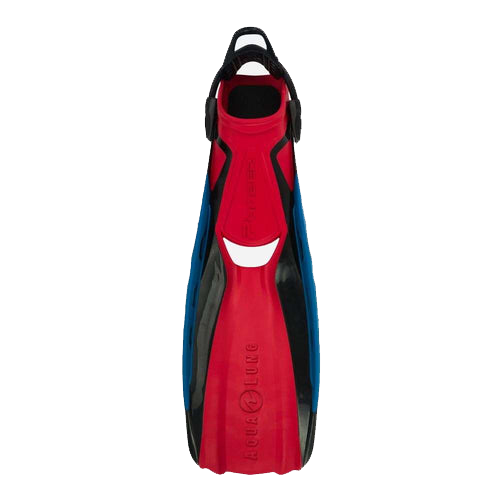
Full foot fins have a foot pocket and you wear them barefoot – if you get a good fit, that provides a glove-like fit and one less item to purchase/carry. They are also a little more streamlined, and so long-bladed versions (for providing a lot of thrust) are very popular with free divers. The downside is that if the foot pocket doesn’t fit too well, you get chafing on your skin, and these fins aren’t suitable for diving in colder waters. Also, most typical full foot fins in the market – with a few exceptions – tend to be oriented more towards beginners looking for relatively easy fins to dive with, and aren’t the best performance oriented fins in terms of being able to handle currents.
The one exception is freediving fins, which come in full foot format only for greater aerodynamics. Many dive pros prefer full foot fins with long blades for the increased power they provide.
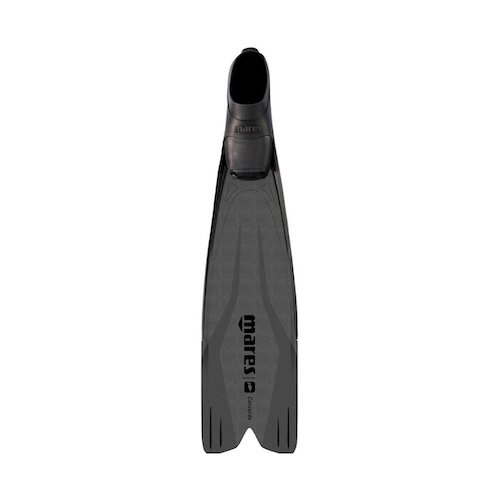
Does that mean you should get free diving fins? Not exactly. For starters, freediving fins can be quite difficult to use with scuba gear if you dont have the leg strength. They are also a pain to travel with (their length makes it very hard to find a suitcase that will fit them). And they are also quite difficult to handle on a dive boat, where you often have to kit up and then walk to the entry point.
My general recommendation for someone looking for their first pair of fins is to get a good pair of open heel fins. They are versatile, offer high performance and forgiving fit, and work in all sorts of conditions.
ATTRIBUTES OF SCUBA DIVING FINS
Before we try to answer this question, let’s see a framework for the various attributes of scuba diving fins. Scuba diving fins come in a wide variety of shapes, colours, features, etc, so let’s go over how to select a pair that is best for you.
There are 5 attributes that you need to think about:
BUOYANCY: Do the fins float or sink? And how does that match your legs? Remember, the fins are the furthest from your center of gravity, so any changes in their buoyancy will have a much greater impact than a corresponding change in your weight belt, for example. Often times, if your legs are sinking, the solution can lie in your choice of fins. It is critical that you pick fins whose buoyancy attributes are suitable for your body type – the best-reviewed fin in the world is going to be a disaster for you otherwise. Case in point – the venerable Scubapro Jetfin, a classic that I absolutely love when diving with a drysuit and which I would never, ever wear with a wetsuit because of how they drag my legs down.
SIZE: To the joy of some and chagrin of others, size definitely matters. As far as propulsion goes, the effects of size are factored in the stiffness and thrust attributes that I will discuss below, but size also matters when it comes to the simple act of packing for dive travel. Smaller fins let you use a traditional check-in suitcase while larger fins may require a specialized dive bag. Personally, given the important of fins in overall diving comfort, I would only use size as a tie-breaker when trying to decide between two comparable fins – I would not sacrifice my diving comfort just for a little convenience in travel (in the end, the cost of needing to take a larger bag is insignificant, compared to the overall cost of a diving holiday). Size also matters when it comes to caves and shipwrecks – the tight confines of such spaces are better served with smaller fins. Similarly, for underwater photography, long fins are a hazard to the reef behind you and more likely to cause accidental damage – small fins work better there.
STIFFNESS: Here, I don’t mean how the literal stiffness of the materials (although that is related) but a measure of how much effort the fins need to be moved up and down. The stiffer the fins, the more effort that is required. Stiffer fins are also better for doing the frog kick.
THRUST: This is how much forward propulsion you get with each kick cycle. Some fins will move you more, some will move you less. This is a function of fin design, size and materials used. In general, more stiffness equals more thrust, but manufacturers spend a lot of time trying to find ways to increase thrust while reducing stiffness.
BITE: This a term I have coined for much water-feel you get with the fins. Swimmers get used to “catching” the water in their palms. Squash or tennis players will know how some racquets give them a good feel/touch when they hit a ball. Some fins “bite” the water well and allow for very precise control in the water, making them ideal for small adjustments in the water (eg, when taking photos or manoeuvring inside a shipwreck). This is generally related to the overall stiffness of the fin. Bite is more relevant for divers who need to make small adjustments in the water – eg, wreck or cave divers or underwater photographers. It is less relevant to most people diving in open water, except in terms of proprioception, which admittedly will affect how the diver feels in the water.
FIN DESIGNS
The basic physics on how propulsion works is quite simple: the more power you put in, the faster you go. And in general, more thrust comes from fins that are both larger and stiffer (there’s a joke in there somewhere). The Cressi Master Frogs are a very simple illustration of this principle at work: they are large blades of very rigid plastic that require you to muscle them around in the water, to which they respond by moving you with alacrity. No fancy tech or finesse involved – the more muscular effort you put in, the more power you get. The downside is that the excessive stiffness can cause cramps to people who aren’t used to applying this level of torque with their legs.
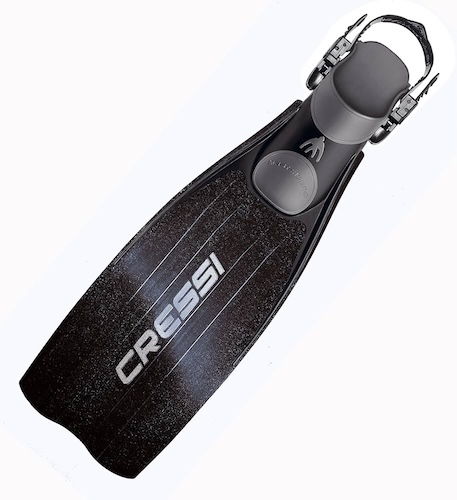
The holy grail of fin technology is to make things easier – to provide more propulsion with less effort. The way they achieve this is by using design and technology to reduce the size/stiffness of the blade while maintaining thrust. This can often be a good trade-off: for example, a big reduction in stiffness for a minor reduction in thrust can make a fin significantly easier for everyone to use, regardless of fitness level/leg strength. Channels in fins, varying stiffness at different parts, etc are all techniques used by manufacturers to achieve this, with varying degrees of success. The trick is to find the balance of stiffness and thrust that suits you.
One of the most successful design is the Scubapro Jetfin, which was the first to use vents to control water flow. This allowed the fins to be made significantly smaller in size while retaining a good amount of stiffness and providing superb thrust with excellent water feel. Their staggering popularity spawned an entire genre of similar fins. And the fact that these fins are still around 35+ years after their development is a testimony to the effectiveness of their design.
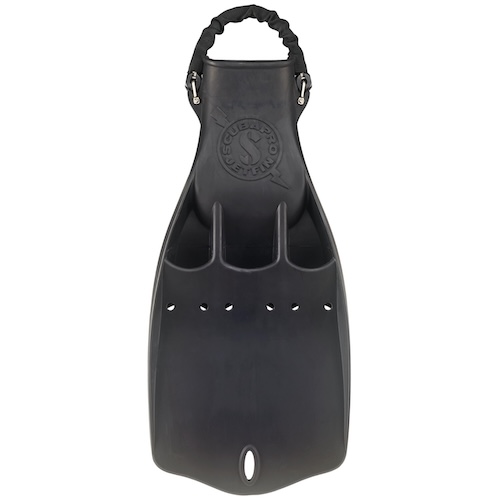
The second innovative fin design came in the form of the Mares Quattros – which used channels to change the shape of the fin on the upstroke vs the downstroke. The result was a fin that was softer on the upkick but which flared out on the downkick, resulting in a larger blade area and more power. Despite their size, the Quattros are surprisingly easy to kick (lower stiffness) while still providing top of the class propulsion. They’ve recently (as of July 2025) undergone a minor upgrade after nearly 25 years of unchanged design – another testimony to how good they are.
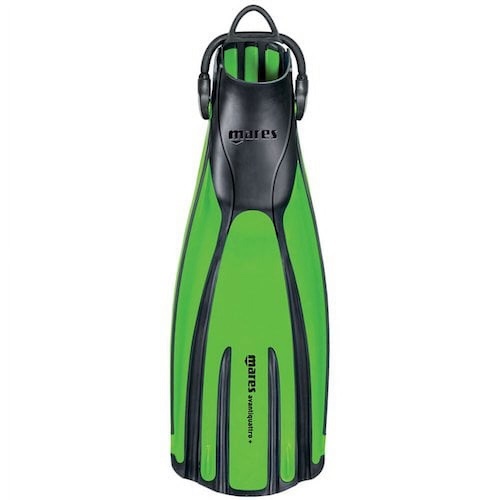
A more extreme way to achieve higher propulsion is by reducing the stiffness and thrust even more, but requiring divers to compensate by kicking more often. This is the analog of using high cadence in cycling/high turnover in running: it reduces the muscular effort involved, but the downside is that it shifts the stress onto the cardiovascular system, increasing your heart rate and breathing rate. Split fins are a classic example of this – they are very easy to kick (low stiffness) and have a relatively low thrust, but that ease of kicking allows you to kick more often, which compensates for that low thrust and provides decent propulsion.
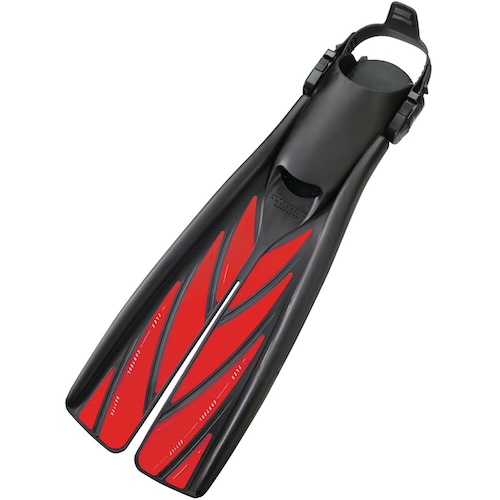
Split fins are quite polarising, however. They are meant for flutter kicks only – no frog kicks (so no caves or wrecks with them). They also utilise a very different kicking approach from other fins. That makes them very much a “love them or hate them” proposition, and they are not something I will recommend for someone looking for their first fin.
Lastly, you have that category of fins that my Punjabi grandmother would describe as “shoshas” but which we, being from a kinder, gentler era, will call “innovative designs”. And what do I mean by that?
Let’s see – how about fins with “gears”? The Aqualung HotShots have bands which can be set to different positions to increase the stiffness/thrust of the fins. Or how about fins where the blade detaches from the pocket, in order to make them easy to travel, such as the Tusa Hyflex?
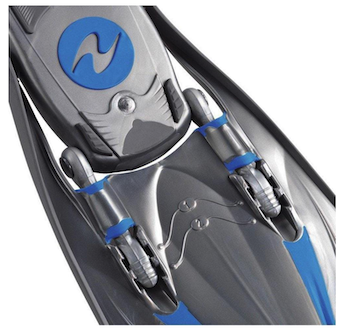
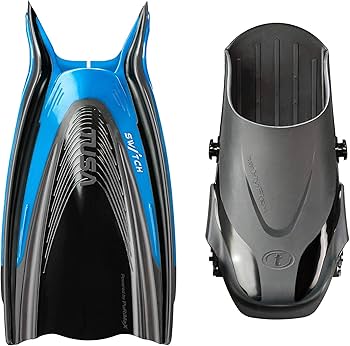
How crazy is that? The results… well, that’s a bit of a mixed bag and very subjective. Suffice to say, I think for your first pair of fins, a more traditional design would be a good choice.
APPLYING THIS – HOW TO FIND THE BEST SCUBA DIVING FINS FOR YOU
The first and most essential step is to find a fin whose buoyancy characteristic suits your natural trim. Eg, I have heavy, long legs that sink very easily – I cannot dive with any fins that are negatively buoyant, atleast not in a wetsuit. So while I loved them paired with my drysuit, the Jetfins are a no-go for me. Instead, I gravitate towards neutrally buoyant fins. You will need to figure out what works best for you.
A word of warning – many divers have a leg-heavy position, but before you assume that this is your natural trim, do eliminate improper weighting as a cause. A vast majority of divers dive while overweighted, which causes their legs to sink. The way to fix this is by working on your weighting – amount and distribution.
The second aspect is practical. Most of us here in India go diving while on holiday – ie, we travel with our scuba gear. So size is a practical consideration and typically rules out things like freediving fins. However, I will caution against going too far in favour of compact fins – yes, those may make travel a bit easier and your bag a bit lighter, but if they cannot handle currents, what is the point? Paying a little more for excess baggage is an easy tradeoff compared to a ruined dive holiday. So my recommendation is use size only as a final tiebreaker – ie, if you have 2 fins you cannot choose between.
Now comes the hardest part – finding the right mix of stiffness, thrust and bite, with the goal of getting the fin with the most propulsive capabilities that you can handle. While it is true that you can get by with less stiff fins that are easier to kick if you are diving in a place without currents, can you always predict the ocean with such certainty? On the other hand, there is also a practical limit to what kind of currents you will be diving in. Contrary to some expectations, it is not very common to spend a lot of time fighting super strong currents that put you at the limit – in such conditions, typically the dive leader will either choose to drift or cancel the dive. And yes, while being able to deal with unexpected conditions is always good, you don’t need to optimise your fins to do things like go against the current at the Cauldron in Komodo, or something like that.
So there is a “real world” range of diving conditions that your fins need to be able to handle, with some variations by location. And the best to do that is by actually trying out the fins in the water.
HOW TO TEST FINS IN THE WATER
My recommendation is to pick fins across a range of stiffness that you can comfortably kick in your preferred style (flutter kick or frog kick) – it is worth trying a few to see which combination of stiffness/thrust feels best to you under your normal kicking motion, but focus more on those that are on the stiffer end of what feels comfortable to you.
Then try muscling those fins, as if you are swimming in a current – make larger/more powerful kicks and see if you comfortably do so for a while without getting tired. Sometimes a fin that is easy to kick at regular efforts gets much harder to kick when you increase the effort – and when your leg gets fatigued, sometimes a fin that is slightly less stiff is actually easier to use.
After that, see how the fins hold up if you kick faster. Fins feel great when you are kicking them leisurely but can get very tiring if kicked fast – or sometimes, they may not even keep up with the kicking rate (especially fins with a lot of funky channels and folding zones and such).
So basically you are trying to get a sense of how the fins behave under your normal kick cycle, under a more powerful kick cycle (one using more leg strength) and under a faster kick cycle. This combination will give you a good sense of how the fin behaves in the water under different conditions, and which feels better for you.
Photographers and others requiring precision in the water should also try to make small adjustments in the water using just your ankles – feel the “bite” of the fins and whether they give you good feedback and water feel to make precise corrections.
With a plethora of fin choices out there, it is virtually impossible to try all of them (if at all – few retail shops allow you to test fins; some of those that do are often limited to only one brand and so biased towards what they sell). So how do you proceed?
Simple: try as many fins as you can. Use dive trips to try as many fins as you can. Ask your diving buddies or dive club if they have something you can borrow, even it is for a short while. And if possible, compare the fins one after the other – that will make these differences I have written about more obvious and help you decide what features matter more to you.
Finally, a good dive center or instructor will help you narrow your choices down to a few candidates based on your length strength, kicking style and trim characteristics.
In the end, some perspective is also worth it – you are not chasing perfection with fins, this long article notwithstanding. You want a pair of fins that works well for you – and there are many choices that will accomplish that. So don’t let ‘paralysis of analysis’ freeze you up to much.
Safe diving!